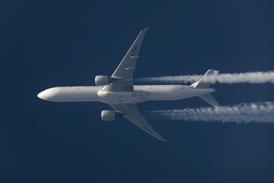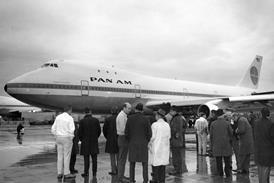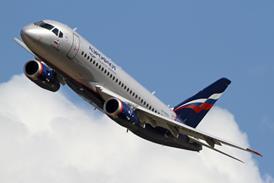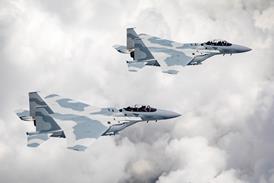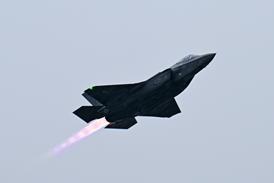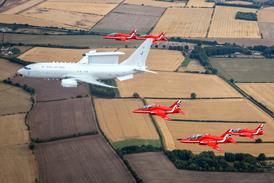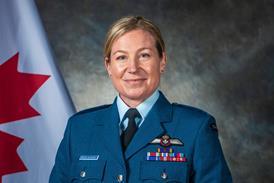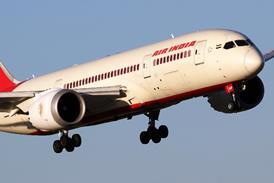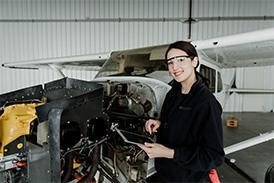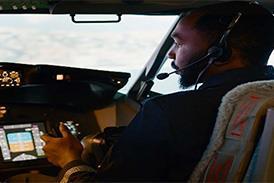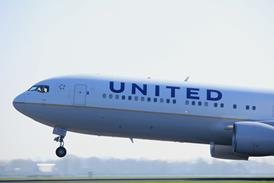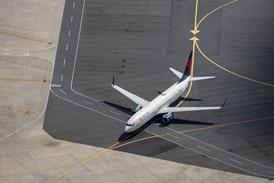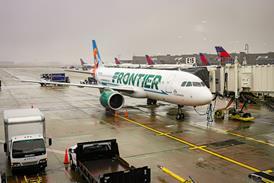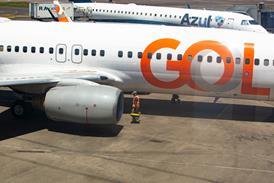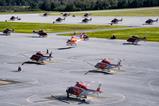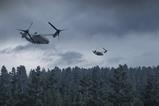Rotorcraft manufacturer Sikorsky has developed an autonomous derivative of the company’s marquee UH-60 Black Hawk helicopter, with a focus on cargo operations.
Unveiled at the Annual Association of the US Army conference in Washington, DC on 13 October, Sikorsky’s S-70UAS U-Hawk is based on the airframe of the older UH-60L model Black Hawk.
However, the company has significantly modified the helicopter’s aerostructure, removing the pilot and crew chief stations and replacing the cockpit section with a forward cargo area.
The UH-60L’s standard nose has also been modified with a set of clamshell doors for easy loading of materiel.
“We developed this prototype from concept to reality in under a year,” says Sikorsky general manager Rich Benton. “The modifications made to transform this crewed Black Hawk into a multi-mission payload UAS can be replicated at scale quickly and affordably.”
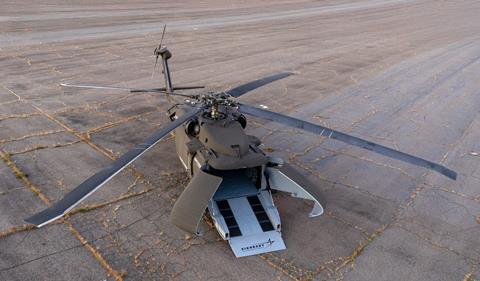
The choice of an L-model UH-60 is not coincidental.
Earlier this year, Sikrosky’s largest customer – the US Army – announced sweeping changes to its long-term aviation strategy and the retirement of many legacy aircraft, including the UH-60L.
At the same time, the service is embracing uncrewed aviation as the way of the future, anticipating highly lethal battlefields that will force many conventional rotorcraft to operate increasingly farther from the forward line of contract.
Sikorsky is positioning those retiring UH-60Ls as assets to help to the US Army modernise its aviation operations, rather than as an expensive liability to maintain.
While the US Marine Corps already has an active programme exploring the potential for autonomous rotorcraft to provide logistics support to forward troops, the US Army is yet to pursue a similar effort.
Sikorsky has already demonstrated a UH-60 equipped with the company’s Matrix autonomy package as part of the USMC’s Aerial Logistics Connector programme. The company is clearly hoping to get a head start on a potentially similar line of business within the army.
Unlike the UH-60A Optionally Piloted Vehicle that is capable of both piloted and autonomous flight, the new S-70 U-Hawk will be autonomous only.
“The U‑Hawk offers a cost‑effective utility UAS by leveraging commonality with the existing UH‑60 fleet, and its uncrewed nature reduces both operating and maintenance costs,” says Igor Cherepinsky, Sikorsky Innovations director.
“We focused on efficiencies in the retrofit by designing and manufacturing vehicle management computers, actuation components and airframe modifications,” he adds.
The removal of the cockpit stations allows for up to 25% more cargo volume than a standard UH-60L, with the addition of a roll-on/roll-off ramp in the clamshell nose section for deployment future uncrewed ground vehicles (UGVs).
Like the conventional Black Hawk, the U-Hawk will allow for side loading through side access doors on either side of the main cabin.
The new uncrewed variant will offer an internal cargo payload of 3,175kg (7,000lb), an external sling load payload of 4,082kg using a cargo hook, or a combined total load of 4,536kg split between internal and external.
Sikorsky says the U-Hawk will be capable of carrying four of the Pentagon’s standard Joint Modular Intermodal Containers, versus two on a standard UH-60L.
The new cargo variant will also be able to airlift large munitions, including a HIMARS rocket pod for the Lockheed Martin ground artillery system or two of Kongsberg’s Naval Strike Missiles.
The U-Hawk will offer ability to self-deploy over 1,600nm (2,963km) or loiter for up to 14h without refuelling.
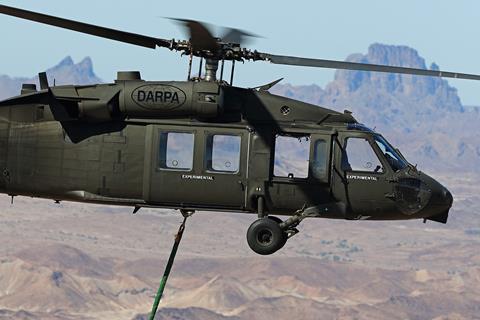
Sikorsky also envisions the U-Hawk as a delivery vehicle for the new family of so-called “launched effects” uncrewed aerial systems being developed by the US Army to deliver a range of battlefield effects.
The company is working on what it calls a launched-effects “quiver” that would be located in the main cabin area of the U-Hawk. This would deploy small- and medium sized launch effects from the side door.
“It’s able to hold 24 to 50 different launched effects in the back of the aircraft,” says Ramsey Bentley, director of advanced concepts and innovation at Sikorsky.
Bentley lays out a vision for how a U-Hawk might participate in an air assault operation to move combat troops to a landing zone via rotorcraft.
“You would envision the U-Hawk flying ahead of the soldiers,” he notes. “First it dispenses launched effects out the sides of the aircraft, out of our launch effects quiver. Then it lands, it disembarks the UGV and then the aircraft departs.”
“And this is done ahead of any soldiers putting boots on ground,” Bentley adds.
Larger launched effects vehicles would be mounted on external wings or pylons, integration work Sikorsky is also pursuing as part of a broader series of modernisations for the UH-60 class.
Sikorsky expects to complete the first U-Hawk demonstration flight in 2026.


